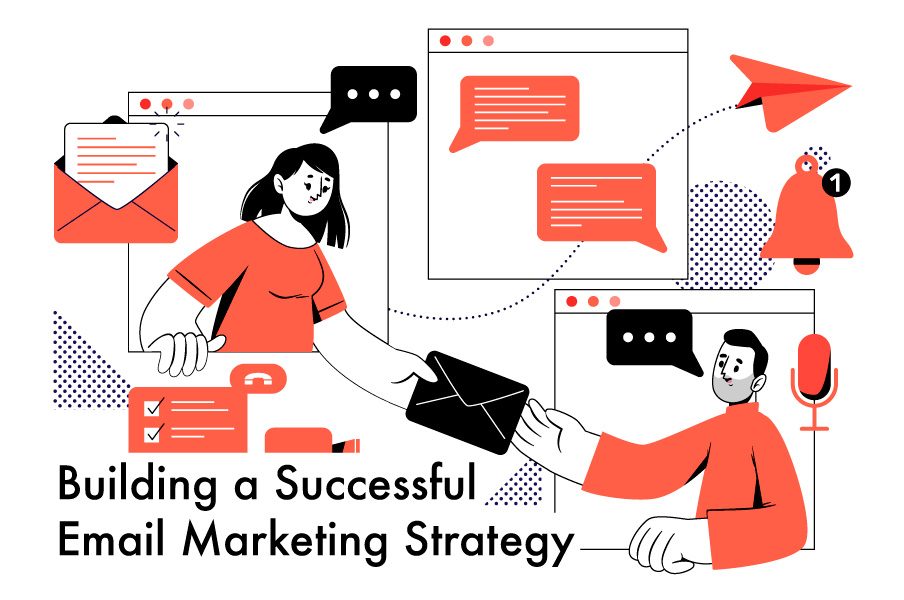Almost every year, marketers talk about email being dead as customers shift towards new mobile apps and social media channels. However, in 2020, 89% of marketers still use email as their primary lead-generating channel, with a 22.86% open rate across all industries. Social media comes in at an engagement rate of only 0.58% for Facebook, Instagram, and Twitter, showing email is still a powerful marketing tool.
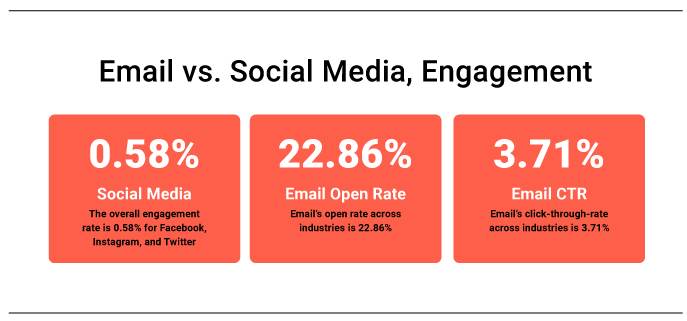
Source information: Optinmonster
In 2021, emails are still far more targeted and relevant to the consumer than some of the noise that disrupts their social media experience.
This article discusses email marketing and how brands can stand out in inboxes and engage with their customers.
Goals, technology, and audience
First and foremost, your email marketing strategy needs to have a clear objective. The goals must be specific, measurable, attainable, relevant, and timely (SMART). Most businesses will be looking to grow the customer base, increase engagement, or sell products and services. If you have a clear understanding of the goal for each communication, it feeds into the content, imagery and call to action. For example, if you want to generate 100 new leads, you might create weekly customer newsletters featuring products where customers can click through to individual landing pages. The results can be measured by comparing the number of visitors and conversion pre and post-campaign.
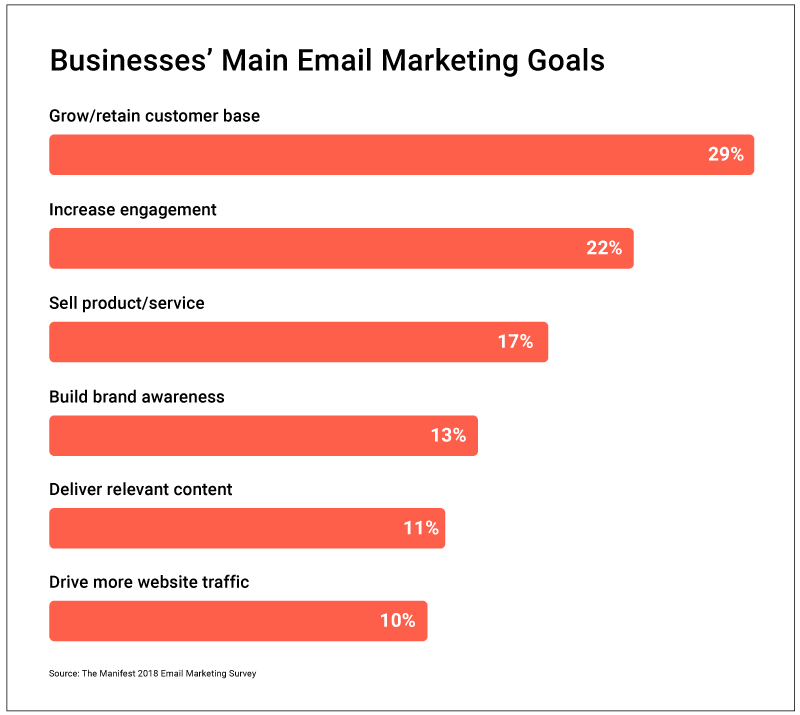
Source information: The Manifest
There are plenty of email marketing platforms on the market, and it’s essential to find the vendor with the best fit for your strategy. Many businesses use Mailchimp as it tends to be the best value platform with sufficient features without being overly complicated. However, more sophisticated campaigns that require a lot of automation and integrations may look to platforms with a more extensive technology offering like ActiveCampaign.
Once your goals are in place, it is easier to select the appropriate email marketing vendor.
Any successful email campaign needs an audience. Before you start sending anything, take time to segment your customer data and ensure it is clean. For example, most regulations now prohibit sending emails to customers unless they have provided explicit consent. Any signup forms must have a checkbox where users agree to an email solicitation.
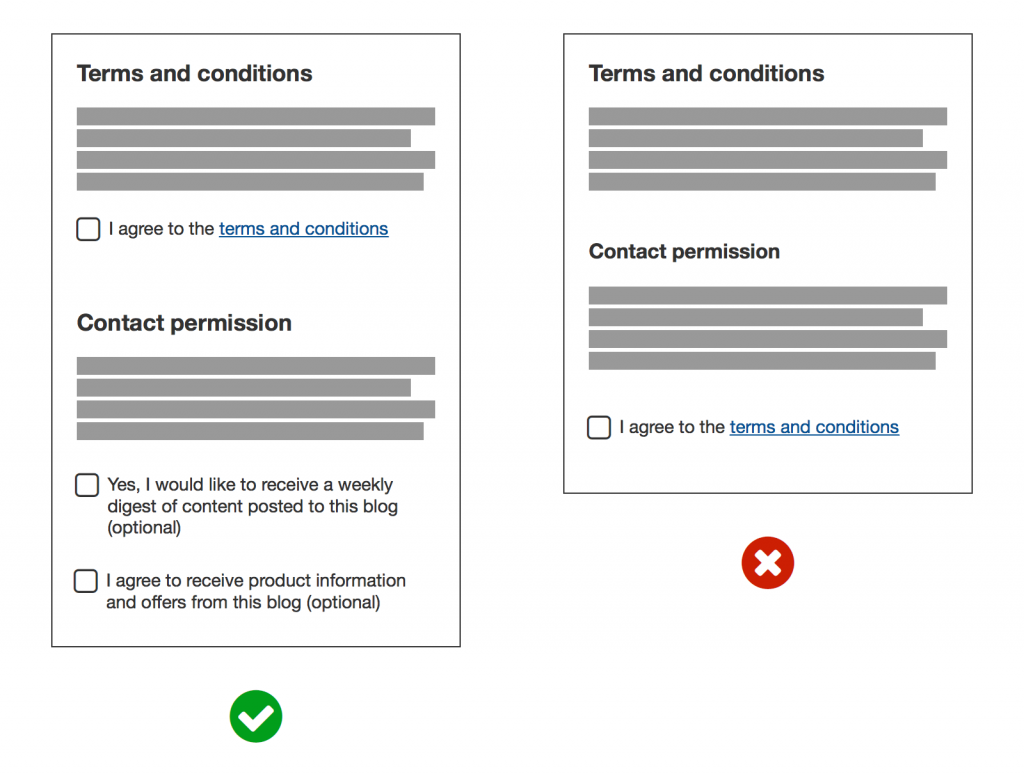
Source: Iubenda
When your goals, technology and compliance are ready, you can think about the email marketing strategy itself. Below are our top 5 tips for delivering a successful email campaign.
Top 5 Tips For Your Email Marketing Strategy
1. Consistent Company Branding
As a brand, your communications need to be consistent and cohesive to drive engagement. Consumers trust brands they recognize and marketing material that seems familiar. According to Oberlo, using a signature brand color can increase consumer recognition by 80%. First impressions count for a lot and determine whether audiences read the email or move on to the following communication in their inbox.

Source Information: Oberlo
The brands below are excellent examples of what consistent email branding should look like.
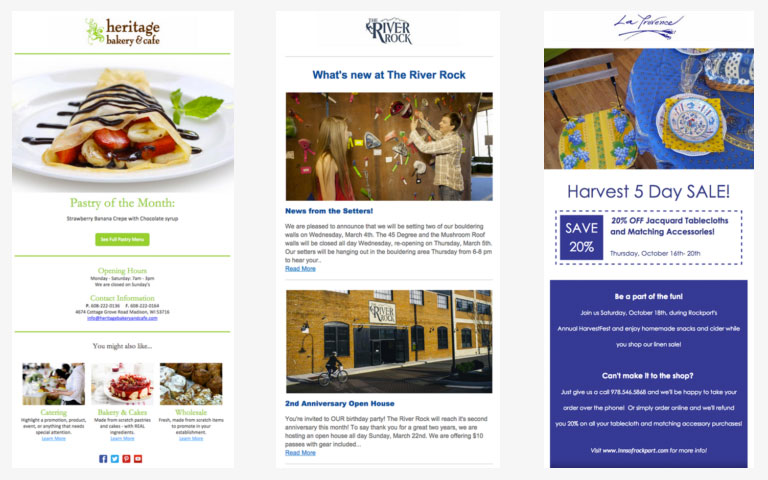
Source: Constant Contact
Email marketing platforms typically give users several templates to pick from for campaigns. We recommend selecting a template and sticking with that throughout your strategy and start building a recognizable brand.
2. Customers want a multi-channel experience
Checking email is the first thing that 58% of adults do in the morning. In 2019, mobile accounted for 42% of all email opens, and 85% of users used a smartphone to access email.
Creating emails is no longer a desktop-only strategy and must offer a smooth mobile experience. Most email technology provides both desktop and mobile responsive templates that fit any screen size. For example, PhotoBox uses different email layouts across desktop and mobile, as you can see in the image below.
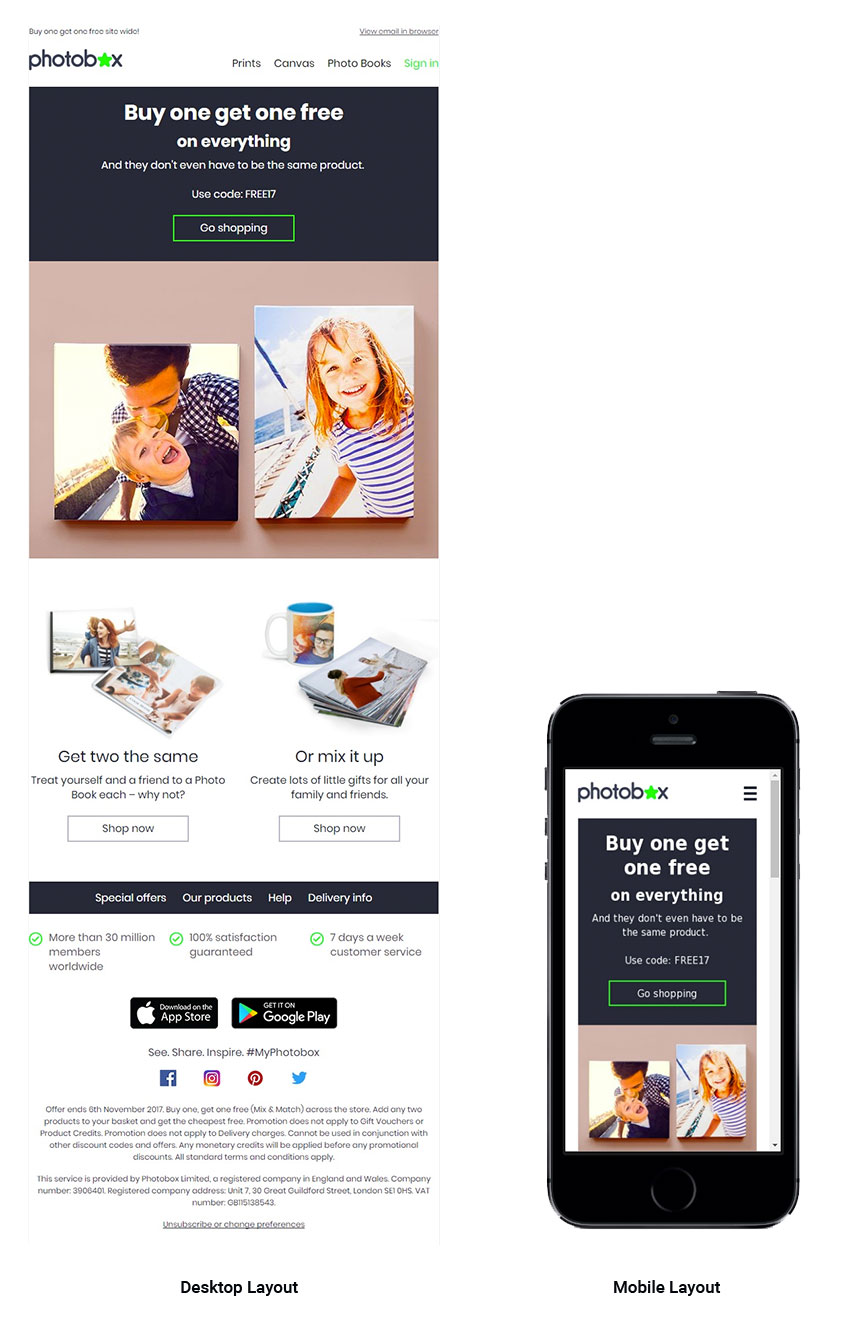
Source: Bold Commerce
Before sending emails, test the design on as many devices as possible to ensure they are responsive.
3. The importance of subject lines
The subject line is the first thing readers see when visiting their email inbox. It can be the decisive factor between whether they read on or send it straight to trash, 47% of people open an email based on the subject, and 69% of customers report emails as spam based purely on the subject.
Subject lines need to be relevant, short, and personalized where possible to get readers to click through. Open rates are higher where the subject line contains fewer words.

Source: Super Office
Adding personalization such as the customer name, your company name, or a product name also boosts the likelihood of opening an email. It shows a better understanding of the customer. It’s also worth remembering that the iPhone cuts off subject lines at 32 characters, meaning anything beyond that length could get missed by the reader.
4. Timing is everything
If you know your target audience, you should know their location, how old they are, and the time they like to check their emails. Email timing is critical to get your content in front of their eyes. As a rule of thumb, statistics point to the four best times to send an email, 10 am, 8 pm, 2 pm, and 6 am.
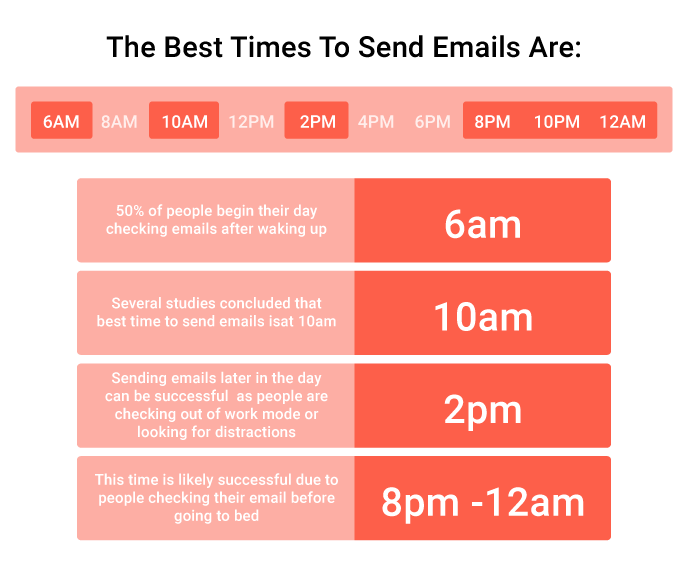
Source Information: CoSchedule
Of course, those statistics can vary by industry and audience, but you might decide to use these standards as a starting point for testing. If you have a global customer base, you will need to schedule emails for their timezone to make the campaign work as you would expect. The majority of email marketing platforms offer a scheduling function.
Try sending emails at different times and measure the success to optimize the campaign.
5. Content is king
You’ve got the perfect subject line, worked out the right time to send your email, and optimized for mobile, but still not seeing an increase in conversions. It’s time to look at your content. For example, if you are sending a post-purchase email, consumers want to see specific types of content.
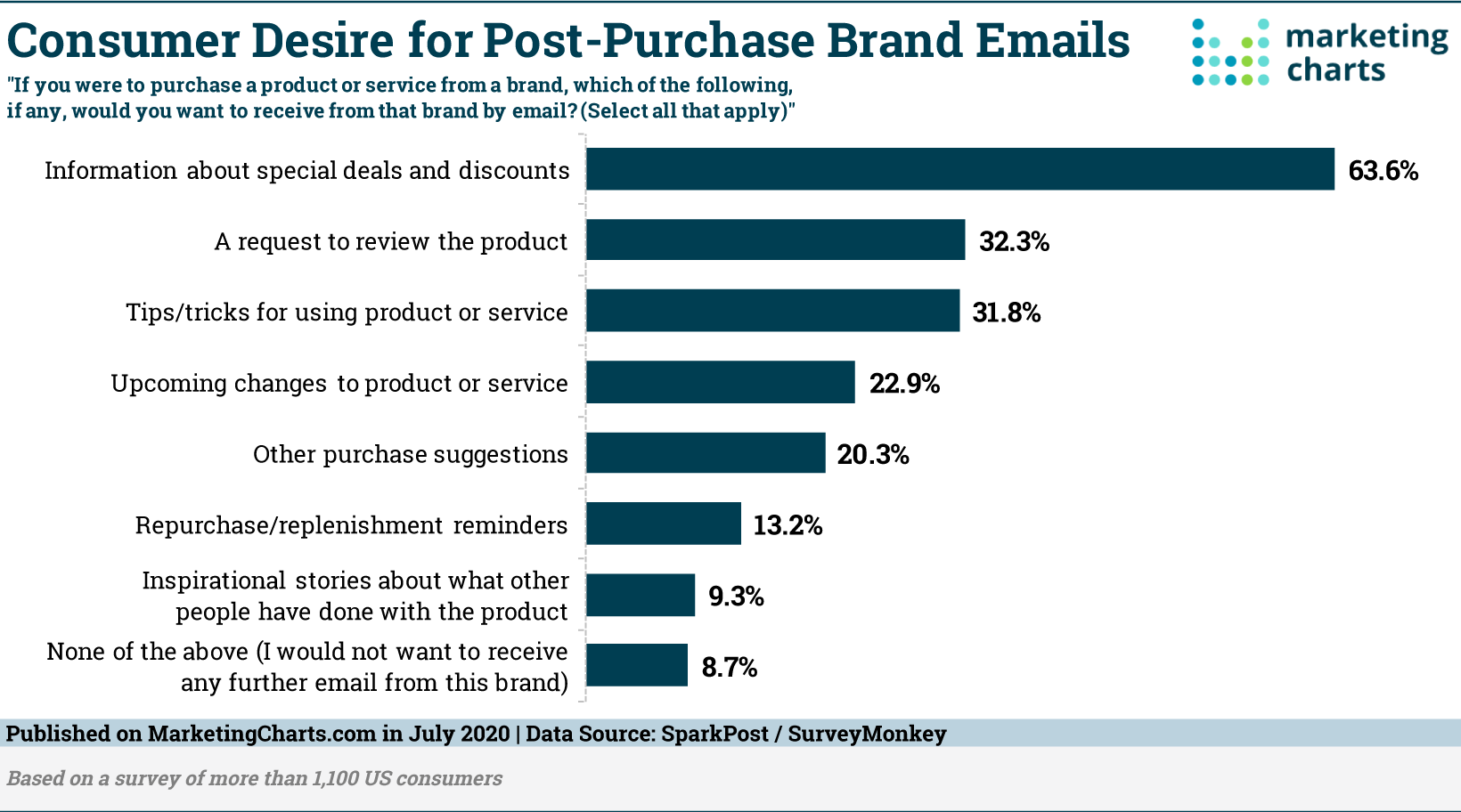
Source Information: Marketing Charts
In this case, if you base content around inspirational stories, there will not be a high level of engagement. Content must provide value to the audience and meet their expectations. For example, Wool and the Gang does a fantastic job of speaking the buyer’s language, turning the email into communication that looks like it’s from a friend rather than a brand.
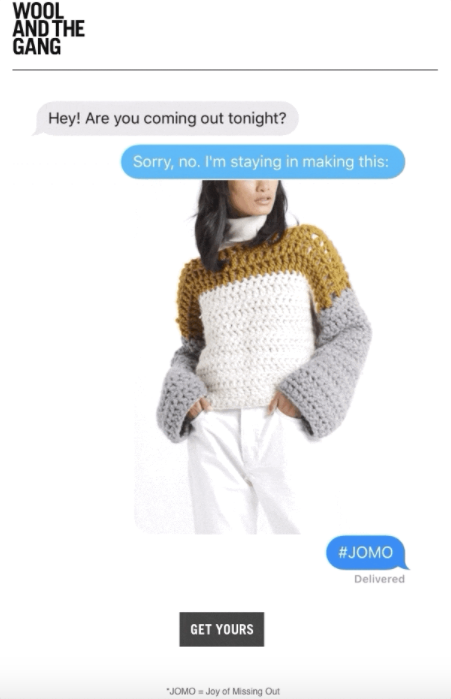
Source Information: Sleeknote
The email sparks a positive emotion with the brand to help create demand for the products. There is no one-size-fits-all answer for email content but always consider your audience and what they expect to see from your brand.
Each email should also have a clear and obvious call to action. For example, do you want customers to subscribe to a list, go to the website, or purchase a product? De Beers Jewellery uses curiosity and interest with a call-to-action button for their readers.
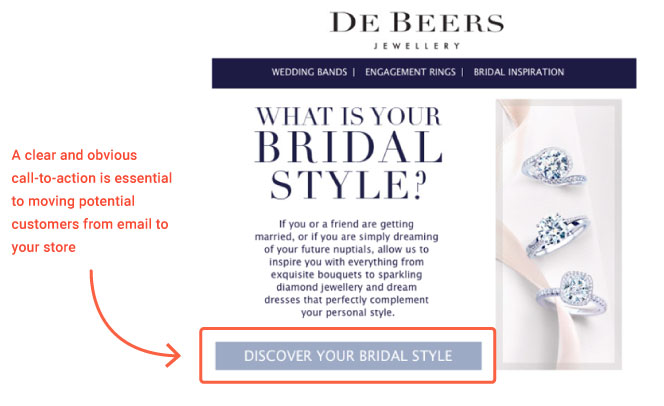
Measure everything and ensure quality
Perhaps the most pivotal part of any email marketing strategy is testing and measuring. Most email marketing platforms will give you the option of sending tests before you finalize the campaign. If that’s not the case, be sure to always have someone else check the content. Using a non-marketer is always a helpful idea as they can provide a more objective view.
There are six cores metrics that you should track with your email campaign. Depending on the set goals, some of these will be more relevant than others.
- Open rate – the percentage of recipients that open the email
- Click rate – the percentage of recipients that click something in your email
- Unsubscribe rate – the percentage of people that unsubscribe from marketing through the email
- Bounce rate – the percentage of emails that are returned to the sender
- Deliverability rate – the percentage of emails that land in an inbox
- Email list growth – number of new subscribers
Over time, you will start to learn what these metrics tell you. For example, a low deliverability rate points to a problem with your data, such as up-to-date email addresses. A low open rate could signal you need to work on subject lines. A low click rate suggests you need to review your content. Small changes can have a massive impact on the metrics, so don’t worry if there is a problem.
Summary
Email marketing is still the perfect way to engage with audiences and drive conversions. The tips in this article will help you follow some of the best practices for campaign success. By setting clear goals and implementing the right technology, you can deliver quality content to your audience’s inboxes.
Like what we have to say? Sign up to subscribe to email alerts and you’ll never miss a post.
